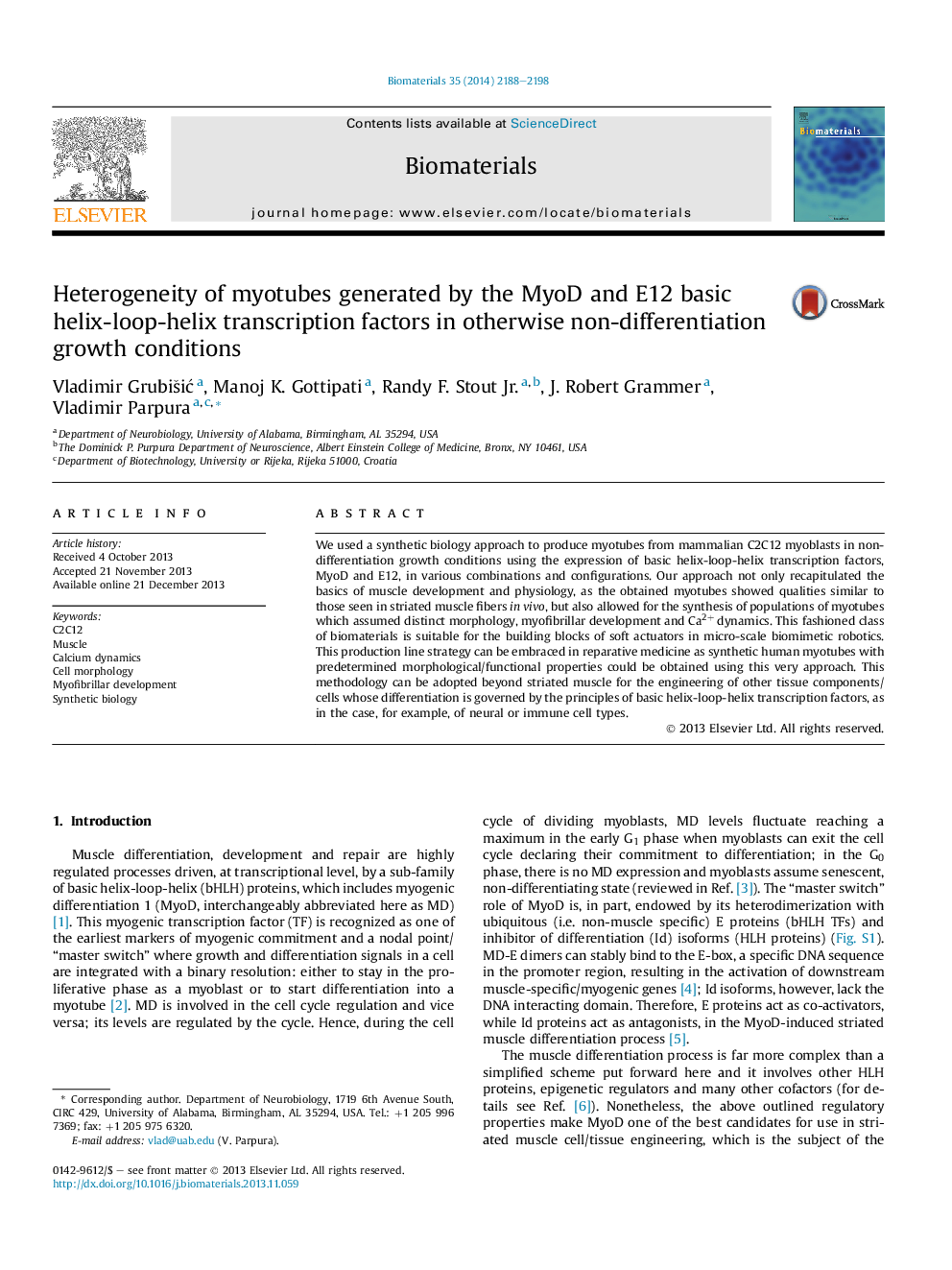| Article ID | Journal | Published Year | Pages | File Type |
|---|---|---|---|---|
| 10228368 | Biomaterials | 2014 | 11 Pages |
Abstract
We used a synthetic biology approach to produce myotubes from mammalian C2C12 myoblasts in non-differentiation growth conditions using the expression of basic helix-loop-helix transcription factors, MyoD and E12, in various combinations and configurations. Our approach not only recapitulated the basics of muscle development and physiology, as the obtained myotubes showed qualities similar to those seen in striated muscle fibers in vivo, but also allowed for the synthesis of populations of myotubes which assumed distinct morphology, myofibrillar development and Ca2+ dynamics. This fashioned class of biomaterials is suitable for the building blocks of soft actuators in micro-scale biomimetic robotics. This production line strategy can be embraced in reparative medicine as synthetic human myotubes with predetermined morphological/functional properties could be obtained using this very approach. This methodology can be adopted beyond striated muscle for the engineering of other tissue components/cells whose differentiation is governed by the principles of basic helix-loop-helix transcription factors, as in the case, for example, of neural or immune cell types.
Related Topics
Physical Sciences and Engineering
Chemical Engineering
Bioengineering
Authors
Vladimir GrubiÅ¡iÄ, Manoj K. Gottipati, Randy F. Jr., J. Robert Grammer, Vladimir Parpura,
